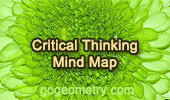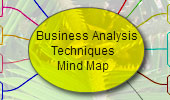Exploring the Complex Landscape of Big Data: A Comprehensive Mind Map

Principal Topics of Big Data
| I. Foundations of Big Data |
II. Big Data Technologies |
III. Applications of Big Data |
IV. Challenges of Big Data |
V. Big Data Trends |
What is Big Data?
- Big data refers to complex datasets exceeding traditional storage and processing capabilities. Processing requires distributed computing frameworks to extract value.
Characteristics
- Volume
- Variety
- Velocity
- Veracity
- Value
Big Data vs. Traditional Data Management:
- Limitations of traditional methods for Big Data
- Specialized tools and techniques for Big Data
Big Data Processing Techniques:
- Batch Processing:
- Stream Processing:
|
Big Data Architecture:
- Distributed Storage Systems (HDFS):
- Distributed Processing Frameworks (MapReduce, Spark):
- Big Data Orchestration Tools (Airflow):
Big Data Programming Languages (Python, R, Scala):
- Libraries and tools for Big Data analysis in each language
- Choosing the right language for specific Big Data tasks
Big Data Databases (NoSQL, SQL-on-Hadoop):
- NoSQL Databases:
- SQL-on-Hadoop Databases:
Cloud Computing for Big Data:
- Scalability and cost-effectiveness of cloud platforms
- Cloud services for Big Data storage, processing, and analytics
|
Big Data in Business Intelligence:
- Customer segmentation and targeted marketing
- Identifying business trends and optimizing operations
Big Data in Customer Analytics:
- Personalization of customer experiences
- Predicting customer churn and improving retention strategies
Big Data in Fraud Detection:
- Machine learning algorithms for anomaly detection
- Real-time fraud prevention in financial transactions
Big Data in Social Media Analytics:
- Sentiment analysis of brand mentions
- Tracking social media trends and identifying influencers
Big Data in Healthcare:
- Personalized medicine based on genetic data analysis
- Optimizing hospital resource allocation and improving patient outcomes
Big Data in Internet of Things (IoT):
- Predictive maintenance for connected devices
- Developing new data-driven services for smart homes and cities
Big Data in Smart Cities:
- Traffic management and congestion control using real-time data
- Optimizing waste collection and energy use in urban environments
- Public safety applications (e.g., crime prediction, emergency response)
|
Security and Privacy Issues:
- Data encryption and access controls
- Data privacy regulations (e.g., GDPR, CCPA)
Data Quality Management:
- Techniques for data cleansing and error correction
- Ensuring data consistency across different sources
Scalability and Performance:
- Big Data infrastructure considerations (e.g., storage capacity, processing power)
- Optimizing data pipelines for efficient performance
Integration and Interoperability:
- Data standardization and schema management
- Tools for seamless data exchange between different systems
Ethical Considerations:
- Algorithmic bias and fairness in Big Data analysis
- Transparency and explainability of Big Data models
|
Artificial Intelligence and Machine Learning for Big Data:
- Deep learning for complex pattern recognition in Big Data
- Automating Big Data analysis tasks with AI/ML
Real-time Big Data Analytics:
- Technological advancements enabling faster data processing
- Applications in areas like fraud detection and stock market analysis
Big Data in the Cloud:
- Serverless computing for Big Data workloads
- Continued growth of managed Big Data services on cloud platforms
Big Data as a Service (BDaaS):
- Benefits of BDaaS for cost efficiency and ease of use
- Different BDaaS offerings available (e.g., data warehousing, analytics)
The Future of Big Data:
- Integration of Big Data with other emerging technologies (e.g., IoT, Blockchain)
- The rise of citizen data science and democratization of Big Data insights
|
This mind map was created with the help of Google Gemini and
ChatGPT3.5 on April 25, 2024.
Graphic Organizers
Graphic organizers are visual tools used to represent information, concepts or ideas, while mind maps are a type of hierarchical diagram that organizes information visually, typically in a branching format, using keywords and images. Both graphic organizers and mind maps are useful for organizing and structuring ideas, facilitating learning and retention, and enhancing creativity and problem-solving skills.




